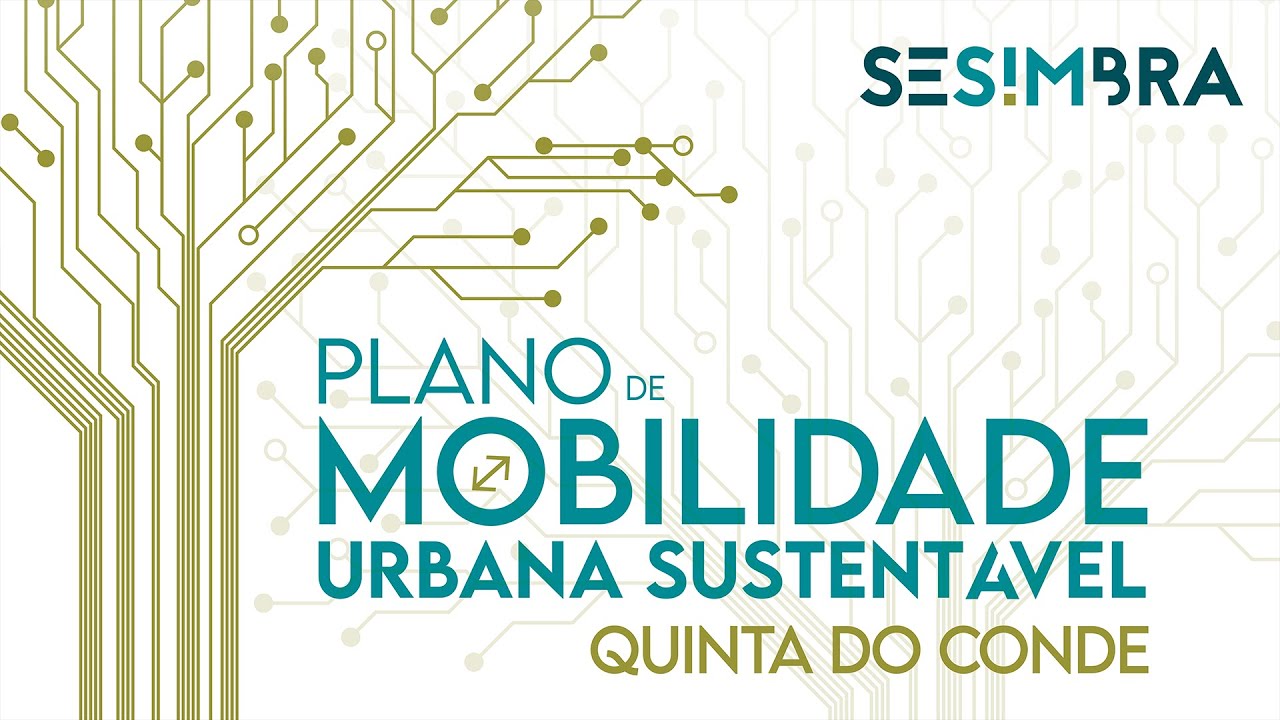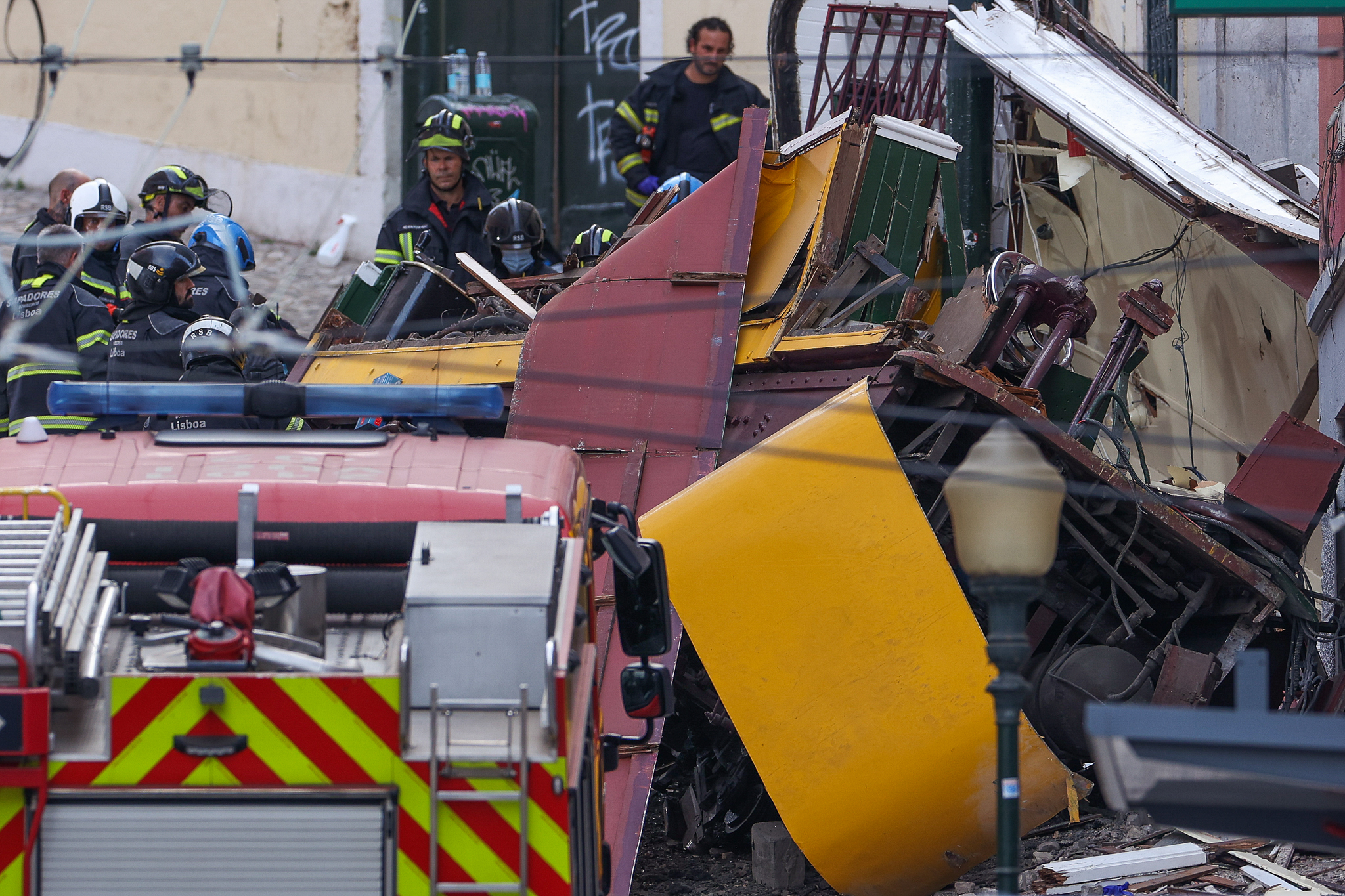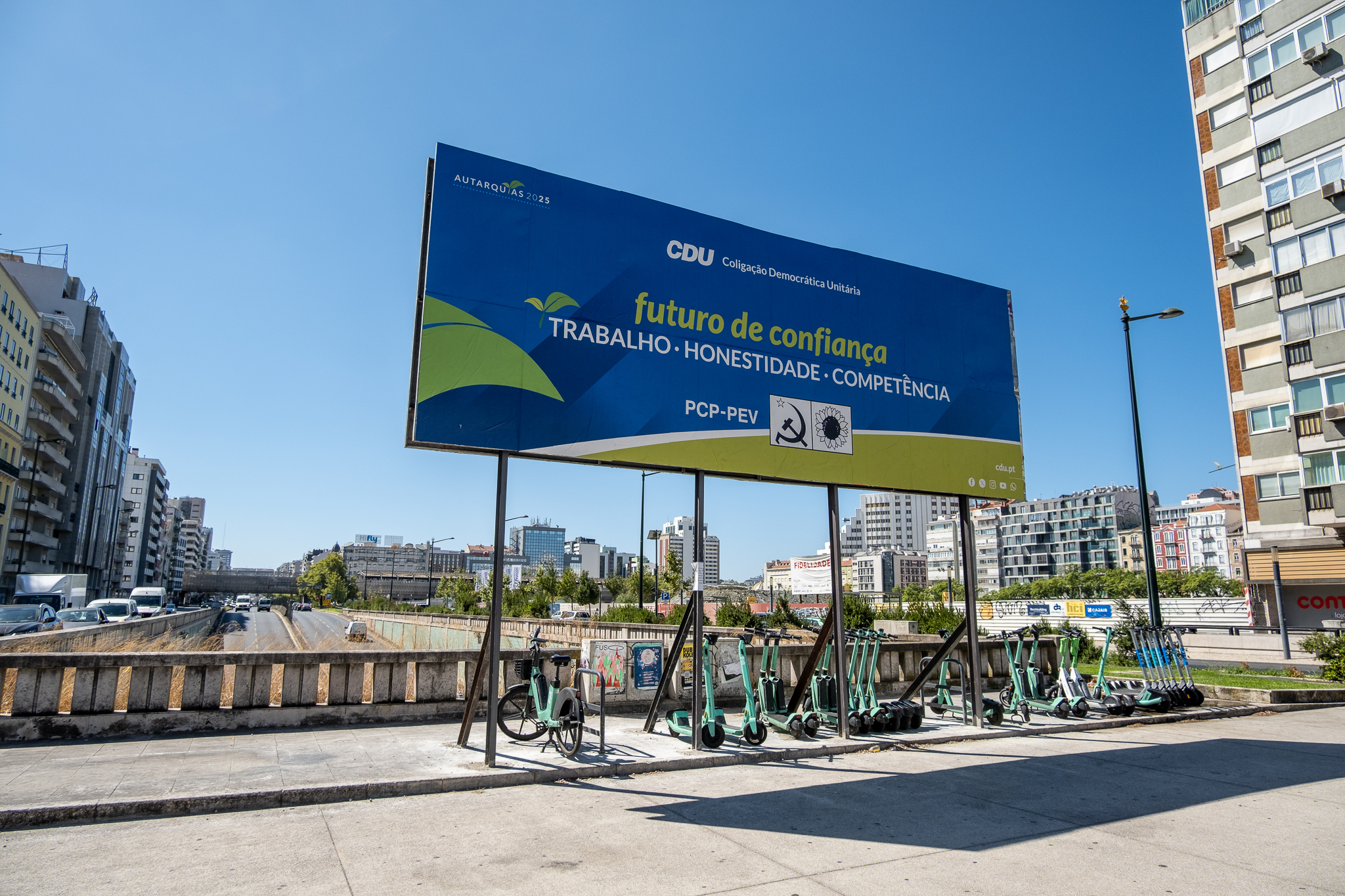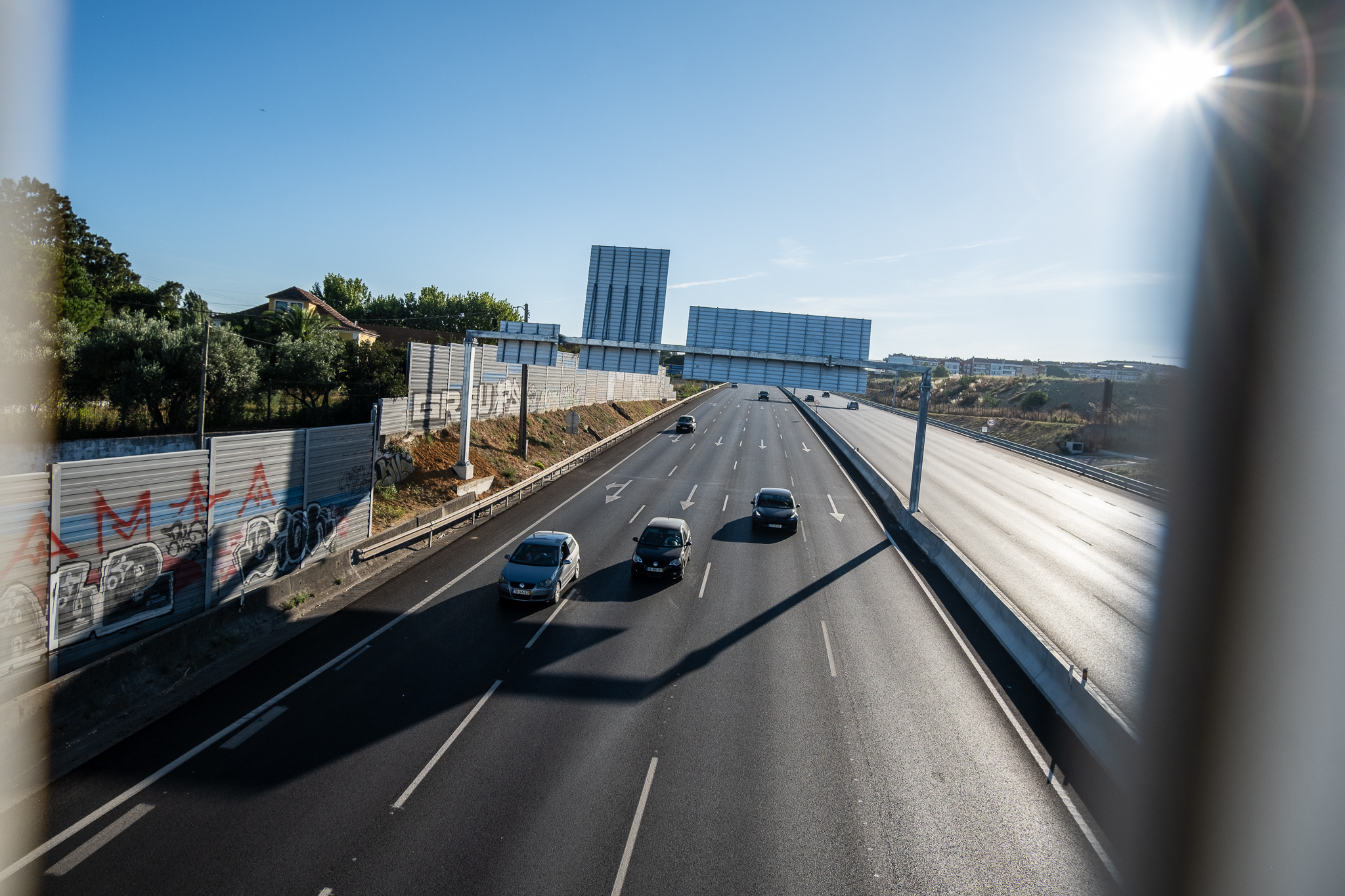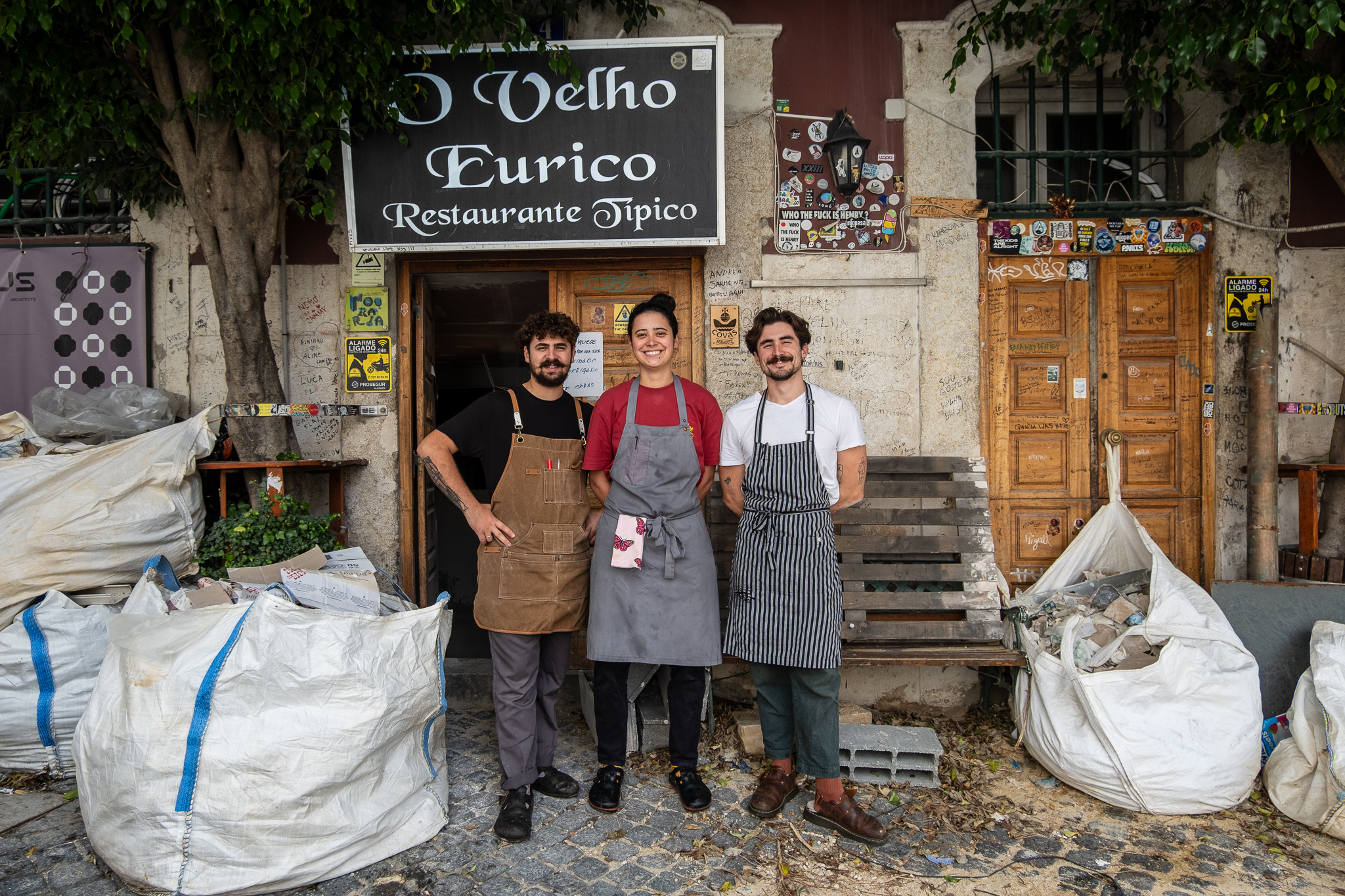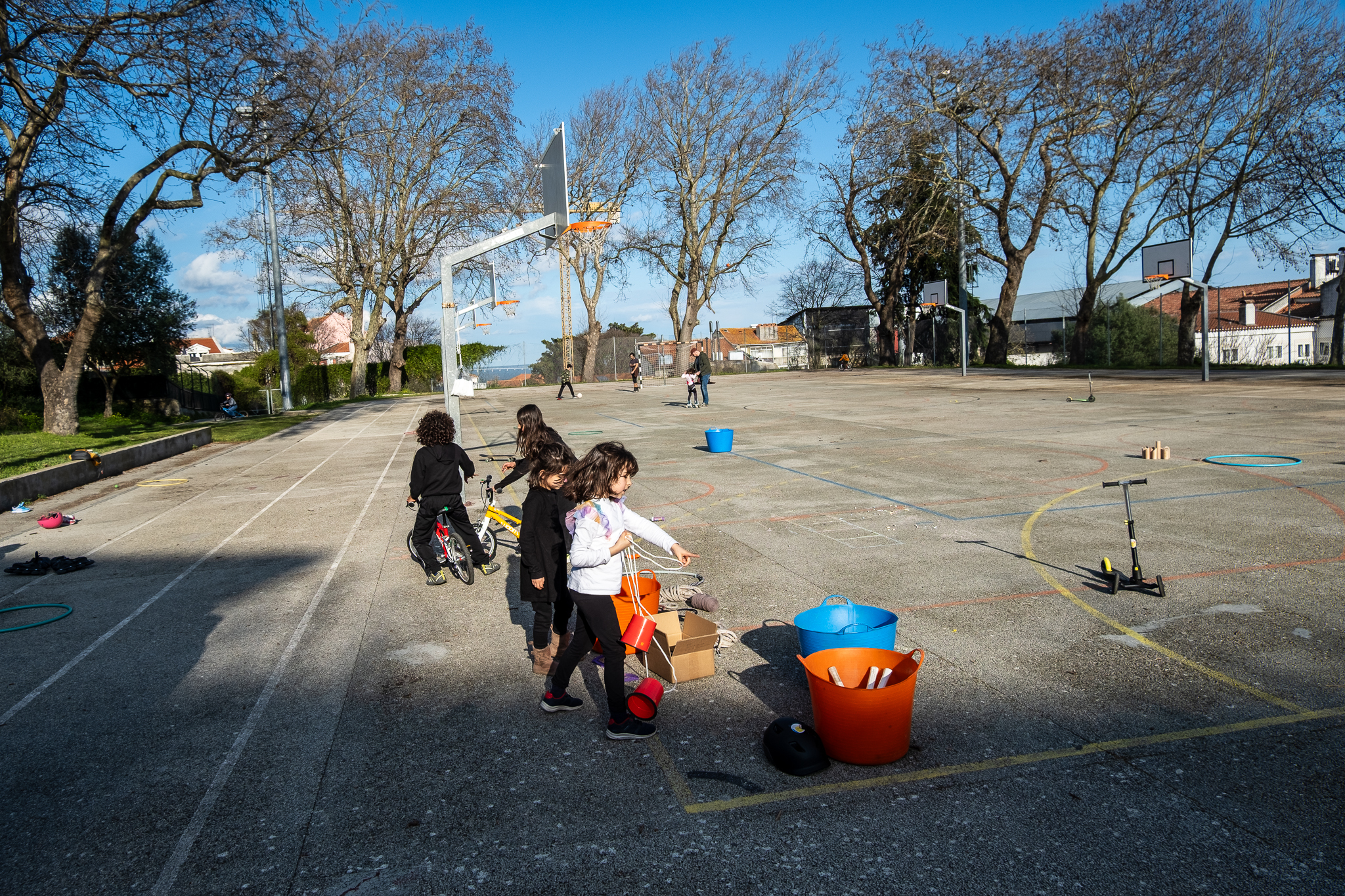In Quinta do Conde, Sesimbra's most populous parish, the car is king with a modal share of 60% and the majority of public space dedicated to it. But there is now a plan to reverse this scenario and put pedestrianization at the top of the agenda. It's called the Quinta do Conde Sustainable Mobility Plan (PMUS) and it has just started to be discussed with the population.

Right in the center of the South Bank, there is an urbanization of single-family homes where everything is spread out. Where distances are relatively long and, as a result, small internal journeys are made by car. Where employment centers are located outside the city, particularly in Lisbon. Where you are surrounded by road and rail infrastructures that act as barriers to pedestrian and cycling connectivity. We're talking about the town of Quinta do Condein the municipality of Sesimbra. Here, the car has a share of 60% (two decades ago it was 52%), public transport represents 24% of modal choices and walking 15% (in 2001 it was 22%).
A car-centric town
A central position of this urbanization on the Setúbal PeninsulaThis, coupled with urban development based on the possibility of living in cheap housing close to the capital and other major cities, as well as some illegal buildings (which have since been legalized), made it attractive to many families who had or found work nearby - "nearby" being understood to mean within driving distance. As such, the majority (60%) of Quinta do Conde residents' daily journeys are outside the municipality of Sesimbra; only 35% are within the parish (of Quinta do Conde) and 8% within the municipality of Sesimbra. The majority of people from Quinta do Conde commute to the municipalities of Seixal, Barreiro, Palmela and, of course, Setúbal, while there are also those who work on the North Bank, namely in Lisbon.


The town of Quinta do Conde represents what urban planners call a "urban sprawlIn other words, a way of developing the territory based on individuality and mono-functionality, where there are mainly single-family homes and where the car plays a central role in mobility. The majority of Quinta do Conde's territory is based on an orthogonal matrix of residential areas, with streets between 9.5 and 12 meters wide, taking into account road traffic, car parking and pedestrian space, with a detriment to the latter. There are some streets and blocks with shops and services, including schools, large retail brands, cafés, small shops, a health center and a Citizen's Bureau.


Quinta do Conde's orthogonal layout, combined with the fact that it is a relatively flat area, are opportunities to transform the town of Sesimbra, increasing pedestrian mobility, reducing car use, particularly for internal journeys, creating more public space of quality and proximity, and diversifying uses. In order to achieve this transformation, planning is needed and it is with this in mind that the Sesimbra City Council has started to draw up Sustainable Urban Mobility Plan (SUMP) for Quinta do CondeThis is the most populous parish in the municipality - more than 28,000 inhabitants, a population that has almost doubled in the last two decades.
What is a Sustainable Urban Mobility Plan (SUMP)?
A Sustainable Urban Mobility Plan (SUMP) is a document outlining the mobility strategy for a given territory and the actions that will enable that strategy to be implemented. It is not yet a mandatory planning instrument, but progress is being made - both at European and national level. The drafting of Quinta do Conde's SUMP was hired for 69 thousand euros to the Paula Teles - a civil engineer specializing in urban planning and sustainable mobility - through her consultancy, MPT, which has worked with several municipalities in the country. "This isn't about making a plan because we feel like making a plan. Planning in Portugal is not always practiced very much: more work is done than plans"Paula explained, pointing out that Quinta do Conde is one of the few places in the country with a SUMP in preparation.

"We have a flat area where we need to reduce distances and avoid mono-functionalities. We have to understand how Quinta do Conde can stop being just a residential area and become an urban area with various functions"Paula Teles pointed out. And in that respect, "A mobility plan is not just a plan to deal with commuting, it's not a traffic plan. It's a plan that will try to introduce changes in terms of services or also find areas that can be green spaces"he said. "We want this plan to change land use planning, to give more muscle to some areas of Quinta do Conde. Here we have a very similar fabric that has no differentiating elements. We want to make Quinta do Conde more beautiful."
Paula Teles was speaking at one of the two public sessions that Sesimbra City Council organized with the population last weekend, one in the afternoon and one in the evening, the latter broadcast online. The aim of these meetings was to present the broad outlines of the SUMP to the population of Quinta do Conde and to start collecting some contributions; the plan documents will soon be published online on the municipality's website so that anyone can consult and also participate in greater detail. For Francisco Jesus (CDU), Mayor of Sesimbra, "it's not the initial phase, but it's not the final phase either"the time to start public participation "so that as many people as possible can contribute". "Not all the measures in this plan will please everyone"he admitted. "That's why it's important for people to get involved now."

"You're going to tell me that this plan represents an investment of millions of euros, and that's partly true. But this is a plan to go beyond the timeframe of this mandate, not least because the financing instruments are nowhere near enough for everything this plan will entail"said the mayor, stressing that the SUMP is intended to be an instrument for 10-year planning to define what needs to be done in the territory, in order to avoid one-off works that are disintegrated from a coherent strategy.. Francisco Jesus pointed out that in one of the funding mechanisms available to the municipality, Portugal 2030, Sesimbra will have 3.4 million for mobility, "which will all be allocated to the development of actions that we consider necessary".
A 15-minute village, organized into "superblocks"

The vision of Paula Teles' team for Quinta do Conde is one of a 15-minute drive from the village. The proposal is to take advantage of its orthogonal matrix and organize the town into "superblocks". Within each block, the streets would be coexistence zones - "or coexistence zones, as our Spanish friends say"Jorge Gorito, a geographer who works with Paula, joked - where there is no difference between the sidewalk and the road because the sidewalk is all uniform. Priority in these areas would be given to walking and cycling; the car could circulate but at a reduced speed (up to 20 km/h) because it would be a mere guest. Without restrictive measures, just by changing the urban design, the aim is to protect the blocks from through traffic and for only residents, visitors and those who need them to drive through. "We suggest defining large squares and axes for road traffic around them, protecting the spaces inside these blocks"said the expert, who also spoke at the presentation of the SUMP.
So where would all the other cars go? On the roads that would surround the blocks: either by Streets 30There would be a differentiation between the space for pedestrians and the space for cars, but the maximum speed would be 30 km/h; either through the Axles 30In addition, the road would be designed for through traffic, but the maximum speed would still be 30 km/h. These low speeds would be guaranteed with calming measures such as raised crosswalks and continuous sidewalks. "The 30 Axes are those roads where it is essential to have the car, where we really can't do without it"Jorge explained. "We have to introduce breaking points so that speeds are reduced, because we know that signage alone doesn't have the necessary impact."




This work involves reviewing the hierarchy of streets in order to establish a new hierarchy throughout the road network, defining the new local streets (Ruas 30), the most important Eixos 30 and also the major roads.
Other SUMP proposals
And what else is there in the SUMP? Paula Teles' team's proposal also suggests:
- a redevelopment of the surroundings of schools and health facilities to create quality spaces for walking, hanging out or playing. For example, "school streets" could be established without car traffic, where only walking or cycling is possible;
- a formalization of a network of "small multifunctional public spaces of proximity" so that, 5-10 minutes from home, the children have a park to play in and the elderly have a green area where they can socialize, for example;

- reinforcing two central areas, the central area of Quinta do Conde and Campo da FeiraThe aim is to create areas for children to play and others for older people to socialize, to introduce shade infrastructures such as trees and water fountains to cool off the environment. The aim is to create areas for children to play and others for older people to socialize, to introduce shade infrastructures such as trees and water facilities to cool the environment on hotter days, to create commercial dynamism, etc. It is intended that the transformations in these centralities can then spread to the surrounding streets;


- the creation of a Ribeira Linear ParkA large urban park along the N10 to help break down the barriers that this road infrastructure currently causes, and which can serve as a transition from the built-up area to the surrounding countryside, but also as a space for leisure and pedestrian and cycling mobility;

- a mitigating urban fractures associated with heavy mobility infrastructureThis includes the N10, the A2 and the train line, with the creation of pedestrian and cycling crossings over it. This includes a walking and cycling route between Quinta do Conde and Coina station, a connection that is currently undesirable;
- developing green corridorsIt's also important to keep in mind that the city has a lot of tree-lined streets that make walking and cycling more comfortable and more pleasant;
- formalize shortcuts to shorten distances on foot or by bicycleIn other words, small streets that are exclusively pedestrianized and cyclable so that these modes can be competitive with the car. "Quinta do Conde has blocks that are very long and make driving more competitive than walking"Jorge Gorito explained. "You can see in the views of the area and in the places where some of these shortcuts already exist, that there is already a desire for these connections"he added;




- establish a cycling network in Quinta do CondeIt is made up of cycling areas, "where different modes can coexist"and cycle routes. The former will be, for example, the coexistence zones within the blocks or the 30th Streets, where bicycles can circulate side by side with cars, or the green routes and shortcuts, where bicycles can share space with pedestrians. "There's no need for every street in Quinta do Conde to have a segregated cycle lane. Bicycles can ride in the coexistence zones, we just have to provide the conditions for it to be safe to do so"the geographer explained. Segregated cycle paths could be created on the main roads, including along the N10;

- a creation of a public bike-sharing system that can go beyond the administrative boundaries of the territory (Quinta do Conde is on the border of the municipality of Sesimbra with Barreiro and Seixal), allowing for "build relations with neighboring territories but also internal relations"serving the town of Quinta do Conde;
- establish a circular bus line that establishes "a relationship between the Quinta do Conde, Casal do Sapo and Coina triangle". "Although there are several bus services in Quinta do Conde, there is none that establishes this relationship, this triangle"since all the Carris Metropolitana lines that pass through the town and Casal do Sapo have other destinations. "Some stops are covered by 50 daily services. If the timetables were homogeneous, it would mean that we would have buses running every 30 minutes"Quinta do Conde is well served by public transport, which is why the SUMP has few proposals in this area;

- create a "a kind of Mobility Shop" in Quinta do CondeThis is an inter-modality store that brings together several modes. In this store, people could get information, take the bus or a cab, or use shared bicycle and scooter services. "Here at the [MPT] office, we call it Public Transport Stop 2.0, a stop that isn't just a shelter and a post box"Jorge explained. The proposal is for the Mobility Shop to be set up in the town's market area. Two information points are also proposed in the urban fabric, one at Largo Mercado do Levante and the other at Grupo Desportivo Casal do Sapo, to help people with their mobility choices;
- installing more comfortable and accessible shelters, "because some of them don't have universal accessibility", e "where there is only a post box there can also be a shelter". "We have to provide better conditions for public transport users, of whom there are many here; there are many who use it to leave the municipality to study or work. We have to improve the waiting conditions"he said;
- a creation of "gates" in the consolidated urban perimeter of Quinta do Conde to mark the beginning of the village and promote local identity;
- a revision of the car parking policy throughout the townIn addition, the city is proposing to establish residents-only parking zones within blocks and on local/secondary streets, no-fee rotating parking zones next to the main streets (here people could park for 30 minutes without paying), and paid parking zones on streets where there is more commerce to promote rotation. In addition, digital parking space availability signs are proposed so that people don't have to drive around looking for vacant parking spaces.



Inverting the pyramid
"If today we still have the car as the king of mobility, we want to invert this pyramid. If before we planned for the car, then for public transport and only then for the rest, we now want to put the pedestrian first"said Paula Teles. The pyramid of priorities that Paula Teles talks about has walking at the top, followed by cycling, then public transport, then shared mobility (including car sharing), "something that here in Portugal we have found difficult to achieve") and, finally, the private vehicle.
During her presentation, the civil engineer brought several major issues to the table, such as the growing congestion in cities and urban areas (The increase in traffic that we have seen is impressive and dramatic. We have more cars and more people driving, and the traffic queues are becoming more and more diluted in time"); the segregation of territories caused by large infrastructures and which separates people, neighborhoods, "makes us stop connecting"; the lack of autonomy of children and young people who "they learn to live in their parents' car and feel the territory through the window"; or even issues such as ageing ("Is the urban infrastructure prepared to keep up with people who are going to live later and later?").



“The two key words that are underpinning our entire conversation are these: 'decarbonization', to prevent us from emitting so much with our journeys, and 'humanization', so that we can communicate more with each other. It's not in this world where we leave a garage inside a bubble and then enter another building that we're going to socialize or have a healthy, active life"said the expert. "If we walk more, we are also benefiting our health more"he recalled. "Changing the culture of mobility will take decades. We can't say the world is in a bad way but do nothing individually. We're talking about a matter where there is some cultural change"added the urban planning expert.
In order to draw up the SUMP for Quinta do Conde, technical diagnostic work was carried out, which included, among other things, a study of the PDM (Municipal Master Plan) or existing urbanization plans, both for Quinta do Conde and for the annexed area of Fontainhas, Casal do Sapo and Courelas da Brava. An analysis was also made of existing traffic studies and reports. All the work was combined with the municipality's plans, as well as with the metropolitan expectations for this area. The plan presented will now enter a broader public discussion phase when it is published in full. For the time being, the two sessions held have allowed some contributions to be gathered.



At the afternoon presentation, at the Quinta do Conde Parish Council headquarters, the people present seemed to like what they heard, but pointed out that there were problems of the present that could be solved quickly and practically. "No one is going to take public transport if the bus runs in the middle of the cars"She lamented that buses are often stuck in traffic on the N10 at rush hour. He asked for BUS lanes. "By car to the station, it would take three minutes. By bus, it's 22 minutes", added a neighbor, who said she had switched to public transport instead of her car, and asked for faster connections to the station. Another Quinta do Conde resident called for a cycle path on the N10 to allow cycling not only between the town and the train station, but also as a means of mobility to neighboring territories. "It would be something very important to focus on." Another resident asked for shorter bus lines because the buses often arrive at Quinta do Conde full. "The time the bus is running full is the time it doesn't catch people. Shorter buses are better."
Another person asked that, despite the implementation of the plan, we try to maintain the identity of the town, giving as an example the formalization of the shortcuts into urbanized routes. "These little paths, these shortcuts, are something very much ours, culturally very much ours." Another popular call for "neighborhood meetings" to "discussing the town's problems based on people's problems, with a view to cooperation"He regretted that there was little public participation. The people present also complained about abusive parking on the sidewalks, asking for greater supervision of this behavior and also for those who have a house with a parking space to be forced to use it.

For his part, Carlos Pólvora (PS), President of the Quinta do Conde Parish Council, regretted not having been heard during the drafting of the SUMP. "This plan shows the Quinta do Conde of the future, but I think the Parish Council could have been important, if only to accompany the technicians on the ground. We're the ones who are here and we know the area well"he said, also pointing out problems "micro and easy to solve"These are issues that could improve mobility and everyday life for everyone. Carlos mentioned three: the discontinuity of pedestrian spaces with "sidewalks that are interrupted and force pedestrians to circulate in the space intended for motorized traffic"; vertical signs in the middle of sidewalks ("If the City Council delegates this competence to the Council, we could solve it. It's so easy to do. Without that power, we can't"and two-way streets where cars can't park on both sides but do have them.
The afternoon session was not recorded, but the evening session was broadcast live on YouTube, where it is still available. You can watch it below. You can also download the presentation. The Quinta do Conde SUMP will soon be available on the Sesimbra City Council website for further contributions. For now, comments and contributions can be sent to the Mayor of Sesimbra, who is responsible for spatial planning, at the following address presidencia@cm-sesimbra.pt. You can also contact Paula Teles' team by e-mail at portugal@mobilidadept.com.
